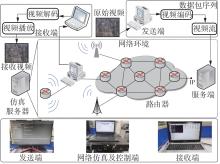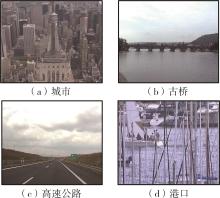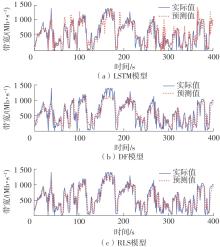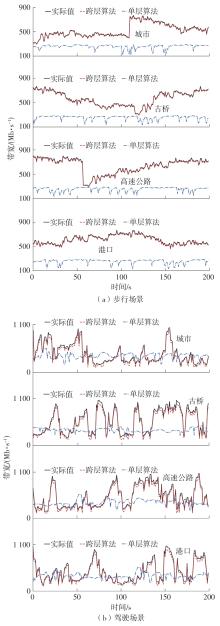| 1 |
ARSAN T .Review of bandwidth estimation tools and application to bandwidth adaptive video streaming[C]∥Proceedings of High Capacity Optical Networks and Emerging/Enabling Technologies.Istanbul:IEEE,2012:152-156.
|
| 2 |
JIANG J, SEKAR V, ZHANG H .Improving fairness,efficiency,and stability in HTTP-based adaptive video streaming with festive[J].IEEE/ACM Transactions on Networking,2014,22(1):326-340.
|
| 3 |
YIN X, JINDAL A, SEKAR V,et al .A control-theoretic approach for dynamic adaptive video streaming over HTTP[C]∥ Proceedings of the 2015 ACM Confe-rence on Special Interest Group on Data Communication.New York:ACM,2015:325-338.
|
| 4 |
HE Q, DOVROLIS C, AMMAR M .On the predictabi-lity of large transfer TCP throughput[J].Computer Networks,2007,51(14):3959-3977.
|
| 5 |
MIRZA M, SOMMERS J, BARFORD P,et al .A machine learning approach to TCP throughput prediction[J].IEEE/ACM Transactions on Networking,2010,18(4):1026-1039.
|
| 6 |
SUN Y, YIN X, JIANG J,et al .C S2P:improving video bitrate selection and adaptation with data-driven throughput prediction[C]∥ Proceedings of the 2016 ACM SIGCOMM Conference.New York:ACM,2016:272-285.
|
| 7 |
HIGUCHI T, SHINGU H, SHIMIZU N,et al .Real-time video streaming based on TFRC using communication logging for 5G HetNet[J].IEICE Transactions on Communications,2019,E102.B(8):1538-1546.
|
| 8 |
KHANGURA S K, AKIN S .Online available bandwidth estimation using multiclass supervised learning techniques[J].Computer Communications,2021,170:177-189.
|
| 9 |
BENTALEB A, BEGEN A C, HAROUS S,et al .Data-driven bandwidth prediction models and automated model selection for low latency[J].IEEE Transactions on Multimedia,2020,23:2588-2601.
|
| 10 |
POKHARKAR S R, WAGH S J, DESHMUKH S N .Machine learning based predictive mechanism for internet bandwidth[C]∥ Proceedings of 2021 the 6th Inter-national Conference for Convergence in Technology.Maharashtra:IEEE,2021:1-4.
|
| 11 |
MEI L, HU R, CAO H,et al .Realtime mobile bandwidth prediction using LSTM neural network and Bayesian fusion[J].Computer Networks,2020,182:107515/1-11.
|
| 12 |
MEI L, GOU J, CAI Y,et al .Realtime mobile bandwidth and handoff predictions in 4G/5G networks[J].Computer Networks, 2022,204:108736/1-11.
|
| 13 |
RIBEIRO V J, RIEDI R H, BARANIUK R G,et al .PathChirp:efficient available bandwidth estimation for network paths [R].Washington D C:United States Department of Energy,2003.
|
| 14 |
KURDOGLU E, LIU Y, WANG Y,et al .Real-time bandwidth prediction and rate adaptation for video calls over cellular networks[C]∥ Proceedings of the 7th International Conference on Multimedia Systems.New York:ACM,2016:1-11.
|
| 15 |
SAMBA A, BUSNEL Y, BLANC A,et al .Instantaneous throughput prediction in cellular networks:which information is needed?[C]∥ Proceedings of 2017 IFIP/IEEE Symposium on Integrated Network and Service Management.Lisbon:IEEE,2017:624-627.
|
| 16 |
TAANI B, ZIMMERMANN R .Spatio-temporal analysis of bandwidth maps for geo-predictive video streaming in mobile environments[C]∥ Proceedings of the 24th ACM International Conference on Multimedia.New York:ACM,2016:888-897.
|
| 17 |
SLIWA B, FALKENBERG R, LIEBIG T,et al .Machine learning based context-predictive car-to-cloud communication using multi-layer connectivity maps for upcoming 5G networks [C]∥ Proceedings of 2018 IEEE the 88th Vehicular Technology Conference.Chicago:IEEE,2018:1-7.
|
| 18 |
YUE C, JIN R,SUH K,et al .LinkForecast:cellular link bandwidth prediction in LTE networks[J].IEEE Transactions on Mobile Computing,2017,16(7):1582-1594.
|
| 19 |
MINOVSKI D, ÖGREN N, MITRA K,et al .Throughput prediction using machine learning in LTE and 5G networks[J].IEEE Transactions on Mobile Computing,2023,22(3):1825-1840.
|
| 20 |
RIKIĆ B, SAMARDŽIJA D, ČADOVSKI O,et al .Cellular network bandwidth prediction in consumer applications[C]∥ Proceedings of 2021 IEEE International Conference on Consumer Electronics.Las Vegas:IEEE,2021:9427757/1-3.
|
| 21 |
ČADOVSKI O, ILIĆ V, RIKIĆ B,et al .Proposal for bandwidth prediction using hybrid division model[C]∥Proceedings of 2021 IEEE International Conference on Consumer Electronics.Las Vegas:IEEE,2021:9427751/1-2.
|
| 22 |
NARAYANAN A, RAMADAN E, MEHTA R,et al .Lumos5G:mapping and predicting commercial mmWave 5G throughput[C]∥ Proceedings of the ACM Internet Measurement Conference.New York:ACM,2020:176-193.
|
| 23 |
RACA D, LEAHY D, SREENAN C J,et al .Beyond throughput, the next generation:a 5G dataset with channel and context metrics[C]∥ Proceedings of the 11th ACM Multimedia Systems Conference.New York:ACM,2020:303-308.
|
| 24 |
HAARNOJA T, ZHOU A, HARTIKAINEN K,et al .Soft actor-critic algorithms and applications[EB/OL].(2019-01-29)[2022-10-20]..
|
| 25 |
CHRISTODOULOU P .Soft actor-critic for discrete action settings[EB/OL].(2019-10-18)[2022-10-20]..
|
| 26 |
迈思源 .Holowan网络损伤仿真仪[EB/OL].(2020-01-12)[2022-10-20]..
|
| 27 |
ZHOU Z H, FENG J .Deep forest[J].National Science Review,2019,6(1):74-86.
|
| 28 |
HAYKIN S .Adaptive filter theory[M].4 ed.Delhi:Pearson Education,2002.
|
| 29 |
WAHAB A, AHMAD N, SCHORMANS J .Variation in QoE of passive gaming video streaming for different packet loss ratios[C]∥ Proceedings of 2020 the Twelfth International Conference on Quality of Multimedia Experience.Athlone:IEEE,2020: 1-4.
|
| 30 |
LAGHARI A A, LAGHARI R A, WAGAN A A,et al .Effect of packet loss and reorder on quality of audio streaming[J].EAI Endorsed Transactions on Scalable Information Systems,2020,7(24):1-7.
|
| 31 |
ADEYEMI-EJEYE A O, ALRESHOODI M, AL-JOBOURI L,et al .Impact of packet loss on 4K UHD video for portable devices[J].Multimedia Tools and Applications,2019,78:31733-31755.
|
| 32 |
AHMAD N, WAHAB A, SCHORMANS J .Importance of cross-correlation of QoS metrics in network emulators to evaluate QoE of video streaming applications[C]∥ Proceedings of 2020 the 11th International Conference on Network of the Future.Bordeaux:IEEE,2020:43-47.
|













